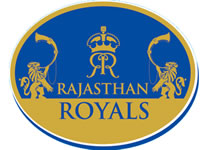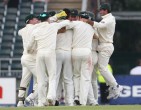How the IPL Was Won
Corey Taylor |
That the Rajasthan Royals won the inaugural IPL tourney is paradoxical because it is both a turn-up for the books and not much of a surprise. Rajasthan was the cheapest of all IPL squads and performances by individual players as much as the team itself represented outstanding value for money. However, the reasons for the success of Rajasthan rested in adhering to long-established cricketing basics rather than any unusual tactics.
1) The influence of Shane Warne`s captaincy should not be under-estimated. Tactically, Warne was sound but he was also heavily involved in backing unfashionable, up-and-coming or unknown players such as Shane Watson, Yousuf Pathan, Swapnil Asnodkar and Sohail Tanvir. Warne is credited with installing in them much self-belief and, as is usual with Warne and most successful captains, good old-fashioned leading by example. That Warne was second on the wicket-taking list (with the first-place getter being one of his opening bowlers, Sohail Tanvir) speaks volumes of just how seriously he took his role. As was the case during his Test career, Warne strongly desired to be the best and lifted others around him to aspire to his standards. Not only was Warne able to lift already talented individuals but also lesser-skilled players started to believe that even if only for this tournament, they too could be world-class performers. The team genuinely believed they could win the tournament because Warne told them so and set about proving it. That head-strong characters such as Graeme Smith, Kamran Akmal, Shane Watson and Ravindra Jadeja played the team game on many occasions speaks volumes about the respect amongst his peers that Warne engenders.
2) With budget more limited than other franchises, team selection was a huge factor. A quick browse of the list reveals a group of players who have often given off the air of something to prove. Rajasthan took the time-honoured route of picking players with the right sort of attitude over superstars. In Watson, we have a potential world-class all-rounder who has struggled with fitness and doubts about his play at the top level and had just completed a very ordinary domestic season for Queensland. He finished the tournament 4th in both the batting and bowling averages. Graeme Smith has suffered doubts regarding his ability to lead the South African side since he was made captain at 21 and ended the tournament 5th in run-scoring. Yousuf Pathan has been within his brother Irfan`s shadow for many years and emerged as a player to watch after some outstanding batting where he finished third on the six-hitters list, solid bowling and a fantastic all-round performance in the final. Munaf Patel has struggled to maintain a place in the Indian starting XI but finished this tournament with his reputation enhanced, not only for just getting through it but for crucial spells. Uniting such players can be credited to Warne but the theme of `something to prove` is also evident.
3) Team tactics were also a huge factor in pushing for the win. The top-3 were generally the biggest hitters, following a successful tactic pioneered by Sri Lanka in the 1996 World Cup. Following these batsmen in the order were players who remained positive but had more versatile games in that they could reign in the aggression or ramp it up depending on the situation. Versatile players such as Watson and Pathan were invaluable and played these roles to perfection after rollocking starts from Asnodkar and Smith. Low-order hitters such as Warne rounded out the near-ideal T20 batting order.
The bowling was slightly different although it did follow the trend for successful bowlers in last year`s T20 world championship tournament. The best-performed bowlers were those who employed skilful variations as opposed to all-out aggression and it`s no surprise that three of Warne`s bowlers (including Warne himself) were in the top-5 of the wicket-taker`s list. Tanvir in particular can expect more opportunities for Pakistan to come his way after a tournament where he ripped through the top-order of several teams with his combination of swing both ways and variation in pace. Warne himself was at his wily best and Watson, known chiefly as a bowler who was fast but lacked zip, took regular wickets with his combination of aggression and multiple pace variations. The back-up bowlers also performed very well with batting all-rounders such as Yousuf Pathan taking regular wickets. In some ways, bowling in general was reinvigorated during the tournament because bowlers, faced with annihilation, were forced to rely on subtle variations and no other attack personified this more than Rajasthan.
Warne`s Royals won the tournament and in the end it wasn`t too surprising. They demonstrated that a successful team can be absent superstars but not attitude. A united sense of purpose is just as important as having players in your team who can hit big sixes or bowl like the wind. Again we see the apparent paradox which wasn`t after all; the tournament began as the face of modern cricket, a new phase for the game and ended it with the winner reaffirming that many factors present in successful teams never change.





Very Well Written. Especially the section about Warne’s influence and contribution to the team as Captain. I wonder how much involvement/input Warne had in the team selection (for non-Aussie/International) cricketers.
It turns out almost all his players were picked after a considerable thought and research. That they won the tournament was obviously I just feel fortunate that I was able to witness Warne in such a role.
Comment by Sanz | 12:00am BST 3 June 2008
Good article, although I reckon Shane Watson was coming off a reasonable season for Queensland rather than an ordinary one. He was the stand-out in an otherwise poor Twenty20 summer for the Bulls and scored a tremendous 190 in the Pura Cup in the second last game against the Redbacks. Just for what it is worth. I see the Aussie selectors have picked him for the one day leg of the Windies tour as well so Watto could well be on the way back, thanks to the IPL.
Comment by Bryan Westlake | 12:00am BST 3 June 2008
Don’t think any of Akmal, Tanvir or Graeme Smith (at least right now) are particularly head-strong but rest of the article was excellent.
The other thing one has to add is the fact that this was perhaps the one team that was owned by people with a bit of a cricketing background. They had done cricket based reality shows, they were associated with the Leicestershire team in the English CC.. While so many others thought they could just buy a team, get media exposure for themselves or for their brands (not that it is completely wrong or anything) and juz throw around the green bills and get as many good players as they can, these guys were the only ones who had a strategy planned out right at the start and they stuck to it inspite of a lot of ridicule coming their way. Once you know what you want for sure, getting it or achieving it becomes that much more easier. I believe it is not all Warne’s show out there. While one cannot question the impact he had, I believe some credit has to be thrown to the owners who wanted him to be the captain right from the start and placed enough confidence in him and his support staff and didn’t impose themselves on the team. That played as much of a part as anything else in their triumph.
Comment by honestbharani | 12:00am BST 4 June 2008